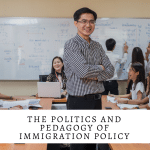TEFL Classroom: With 15 years of experience as an English teacher under my belt, I’ve had the privilege of exploring a myriad of classrooms, each with its own unique dynamics. Starting with traditional offline classrooms, I took my teaching practice online, reaching eager minds in China and Japan, before finally setting down roots in the culturally diverse environment of the United Arab Emirates. This journey has granted me an enriching perspective on the global influences shaping our classrooms today. It’s this international viewpoint, interwoven with personal experiences, evidence-based practices, and fresh ideas, that I aim to share with fellow educators and school leaders.
Beginning Teaching English as a Foreign Language
When I first dipped my toes into TEFL (Teaching English as a Foreign Language) education, my initial assumptions about the profession revolved primarily around language barriers and the challenges therein. However, as I found myself in virtual and physical classrooms interacting with students from various cultural backgrounds, it quickly became clear that teaching is not merely a linguistic endeavor. A significant part of this journey entails understanding and appreciating the rich tapestry of cultural nuances each student brings to the table.
A study published in the Journal of Educational Psychology corroborates this realization. It asserts that the role of cultural sensitivity in teaching, particularly in a TEFL environment, is instrumental in fostering a positive learning environment and promoting effective teaching. This realization prompted me to look beyond conventional teaching methods and seek strategies to integrate this vital aspect into my teaching practice.
When I began teaching English to students in China and Japan, the impact of cultural elements on the teaching and learning process was apparent. Not only did incorporating aspects of the students’ cultural identities make the lessons more engaging, but it also built a strong foundation of mutual respect and understanding between us. It’s this bond, this mutual respect, that truly drives learning. This concept is well-supported by research in the Journal of Language and Linguistic Studies, which emphasizes the integration of cultural elements into TEFL education as an effective teaching strategy.
Cultural Sensitivity
In my current position, cultural sensitivity has taken on an even broader and more profound role. The school’s classrooms are truly a vibrant melting pot of cultures (the most diverse class has 15 students from 12 different countries), demanding a deep understanding and sensitivity toward a variety of cultural identities. This enriching diversity presents a unique set of opportunities and challenges in the classroom, pushing me to learn and adapt continuously.
The unique cultural perspective each student brings to the class is fascinating and provides invaluable contributions to class discussions, collaborative projects, and problem-solving activities. These experiences have not only enhanced the depth of our classroom dialogues but have also reinforced my belief that fostering cultural understanding greatly enhances communication and inclusivity in the classroom.
An essential lesson from these experiences is that, as K-12 educators, our roles go far beyond the traditional boundaries of curriculum-focused teaching. We are not merely imparting academic knowledge; we are shaping young minds to navigate an increasingly interconnected world. We are instilling the values of cultural sensitivity and respect, preparing our students to be global citizens who can embrace and celebrate diversity.
Challenges of Being a TEFL
Of course, this journey has not been without its challenges. It requires ongoing commitment, adaptability, and a willingness to step out of our comfort zones. It necessitates constant learning, unlearning, and relearning. We, as teachers, need to equip ourselves with the skills and knowledge necessary to navigate these multicultural classrooms effectively.
For educators seeking to enhance their TEFL classroom methodologies and cultural sensitivity, I recommend undertaking a comprehensive TEFL course. Such a course should cover not just the linguistic elements of TEFL education but also the skills for understanding and addressing the cultural dynamics in multicultural classrooms. It should equip educators with tools to integrate culture into their teaching practices effectively, fostering an inclusive and enriching learning environment.
In teaching, cultural sensitivity is a must-have, not a mere add-on. Achieving this requires continuous learning and growth. Our classrooms are microcosms of the world, with each student bringing unique cultural perspectives. As educators, it’s our role to foster a space where these perspectives can coexist and enrich one another.
World Beyond the Classroom
Conclusively, culturally sensitive education may seem challenging, but its rewards are invaluable. It promotes mutual respect, creates an inclusive classroom, and prepares our students for an increasingly global society. As educators, let’s ensure our students are ready not just for exams but for the world beyond the classroom.
I hope this article stimulates dialogue among educators, school leaders, and stakeholders. Only through the exchange of ideas and collaboration can we truly achieve an inclusive and globally-minded education system.

Grace Thompson is an accomplished English teacher, boasting 15 years of experience in the field. Initially teaching in a traditional, offline setting, she expanded her horizons by instructing students in China and Japan. Recently, she relocated to the UAE, joining the faculty of Ignite School to continue her educational endeavors.






